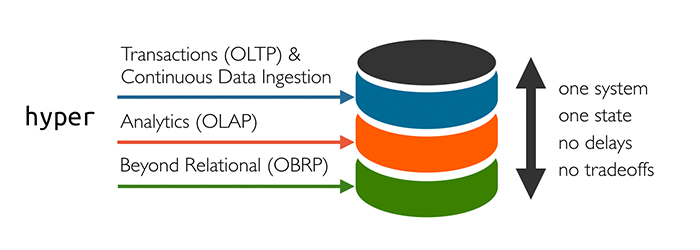
Tableau is getting into the database market thanks to its new Hyper technology.
The data engine, included in Tableau 10.5, is a high performance database system that was acquired by Tableau in March 2016, and was initially developed as a research project at the Technical University of Munich.
Tableau’s new tech is designed to give a big data boost to its users, with the company promising an up to 5X faster query speed and up to 3X faster extract creation speed. The perk being faster insights for larger data sets.
The in-memory data engine (Hyper) is said to give customers the ability to extract their data based on the needs of the business, offering fast query performance, filters that are ‘snappier;, and new fields to data visualisations that are ‘almost instantaneous’.
Hyper’s addition also enables the use of Viz in Tooltip, giving customers a new way to visualise and interact with data. Users will be able to embed contextual visualisations inside the tooltip, without writing any code.
“Viz in Tooltips is a gamer changer for on-the-fly analytics,” said Andy Kriebel, Head Coach at The Information Lab Data School. “Instead of having to switch between views, the insights will be just a hover away. Bringing the insights into the flow of analysis will make decision making even faster!”

As well as Hyper, Tableau has also decided to allow people to run its technology on the open source operating system Linux – in addition to Windows.
Couchbase CEO on AWS, Oracle & IPO plans
WANdisco seals record financial services contract
Why big data projects fail (and what you can do about it)
Senior Consultant at Teknion Data Solutions, Bridget Cogley, said: “I’m excited about the availability of Tableau Server on Linux for a couple of reasons. First, you’re lowering the overall cost of ownership. Second, it creates openings for a developer population that often seeks greater control and security and truly makes Tableau Server platform agnostic.”
If that wasn’t enough for current or prospective users then Tableau has also taken the decision to include new content governance features, making it a bit easier for customers to manage who accesses different portions of data inside Tableau’s systems.






